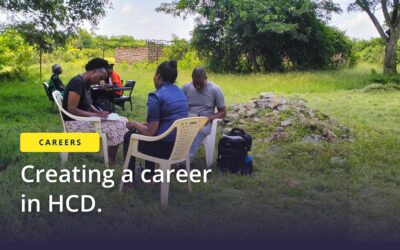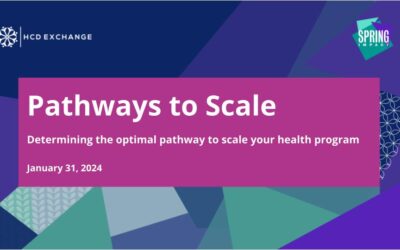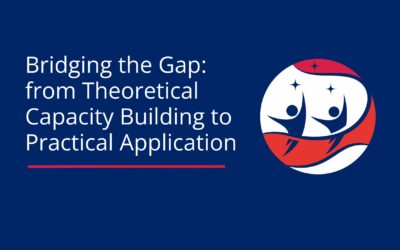Overcoming power imbalances requires intentional commitment from both youth and adults to treat each other as equal thought partners irrespective of differences in age, lived experiences, technical experience, skill sets, financial power and individual aspirations. This means respecting the value and contribution that each person brings to the table, regardless of age, gender and hierarchies.
A skewed power dynamic can affect not just the ability of everyone to participate, but the overall success of an intervention. In our August webinar we learnt how projects in Kenya, India and Sierra Leone are working to address these issues. Billion Girls Co-Lab in Kenya has been intentional about engaging young women (19-24 years) in both processes and outcomes. In the same light, 10to19 Dasra Adolescents Collaborative (Dasra) in India has listened to young people in the design and execution of its strategy. Purposeful brings together young people from all parts of Sierra Leone to participate in the Tar Kura grantmaking process from start to end.
What are programs missing out on when youth are not engaged meaningfully?
When young people are not engaged meaningfully, programs miss the critical youth perspectives that can directly lead to better solutions, as they have the best understanding of their own challenges, desires and what influences their decisions. Without their input, there is a risk of putting time and resources into developing and implementing interventions that do not address young people’s needs.
“Programmatically, not involving the youth intentionally could mean that the problem statement you are working off of could be flawed, meaning, you are speaking on behalf of young people and not with them. This is reinforcing the problem you are trying to solve which can lead to funding being drained towards less impactful programs, and most tragically it could mean we get stuck in the same vicious cycle of structures of power not breaking down and no sustainable solutions being created.”-Yashi Jain, Team Lead, Dasra
Proven practices and approaches to navigate youth-adult power dynamics
- Planning for engaging youth:
- Clearly define your program goals to young people (what’s the end goal of their engagement)
- Define structures for youth engagement (for example contracts, compensation and safeguarding policies)
- Collaboratively set norms and expectations for engagement
- Develop guidance outlining the rules of engagement between the adults and young people in the room
“The best time to plan meaningful youth engagement in order to navigate power dynamics is before the start of engagement with young people and during internal planning phases of your program activities. “ – Christabel Netondo, IDEO, Fellowship Coordinator, Billion Girls CoLab.
2. Create and foster an enabling environment:
- Define and train young people on information sharing channels for open communication, collaboration and feedback loops.
- Make space for vertical mentorship and upskilling to fill knowledge gaps
- Strengthen organizational capacity to better engage young people: build team capacity for mentorship, understanding youth development theories, training on systems thinking and on how to design and facilitate open and youth-centric spaces
- Conduct power sharing exercises where adults are asked to think about their bias/assumptions of youth and what power they could “give” to youth participants.
“Organizations should consider coming up with some sort of a guideline outlining the rules of engagement between the adults and young people in the room. Sometimes adults may not be aware of how they come across when having SRHR conversations with young people and therefore having a guideline on how to navigate these sessions might be really helpful.”- Susan Towett, Youth Engagement Officer, HCDExchange
HCD in power dynamics
It can be difficult to break out of the conscious and unconscious biases that adults have when working with youth without intentional frameworks. HCD approaches give a very effective framework that allows practitioners to question their most basic assumptions and really listen and co-create with youth, which has the potential to make programs transformational.
Since HCD relies on understanding the needs of the end user, it employs mindsets and approaches that cater for the end users’ involvement as an equal partner throughout the whole process from inspiration to implementation. This includes identifying and understanding the end users’ community needs, to testing and iterating their feedback in program interventions.
“HCD is very powerful and, when used properly, can actually play a catalytic role in breaking down power dynamics. For example, in a recent project by Dasra, the collaborative deployed HCD by bringing young people, youth practitioners, NGO partners, and government all on the same table to openly discuss gaps, challenges and solutions that are working. We were able to create a space to allow young people to openly share their challenges with the government in the room as a first step towards solving it.”- Yashi Jain
Role of adults in youth-centered programs
We asked our speakers to share what they believe the role of adults should ideally be in youth-centered programming, here is what they recommended:
- Create enabling spaces and also empower young people to own those spaces
- Recognize and show value for the contribution of youth by making use of their ideas in order to give the youth a sense of belonging.
- Provide mentorship and build the capacity of young people
- Create spaces and advocate for the inclusion of young people in internal processes
- Amplify the voices of youth in their programming decisions
“Adults should be patient and willing to hand-hold (through skill building and professional development) the youth as they are not only present in the program to represent other young people within their community but also because they are genuinely interested in ensuring that the project is successful especially if they have been given a seat at the table and their voices are being heard.”- Susan Towett
Speakers
- Susan Towett, Youth Engagement Officer, HCDExchange
- Christabel Netondo, Fellowship Coordinator, Billion Girls CoLab, IDEO
- Jariatu Rugiatu Sillah, Youth Panelist, Tar Kura Programme, Purposeful
- Yashi Jain, Team Lead, 10to19 Adolescent Collaborative, Dasra
Resources
- Resources on navigating power dynamics
- Ways to ensure meaningful youth participation in your program.
- Billion Girls Co-lab co-design process with young adolescent girls
- Case study of Billion Girls CoLab: Girl-led designed concepts by young women for young women, involving CBOs to pilot the same concepts in the young women’s communities
- Tar Kura project
- Insights from 10to19 Dasra Adolescent Collaborative
- Webinar recording




